|
In the oil industry hub Aberdeen, business as usual prevails: oil and gas are core. Myths of riches are created, hardship and poverty tolerated and the belief shared that oil is essential for life: our industry serves the greater good.
When government regulator The Oil and Gas Authority (OGA) yesterday rebranded itself to “North Sea Transition Authority”[i] all was normal – the oil industry is surely doing the right thing, organising the energy transition, working towards the Paris climate goals. But all is not well. The 1.5 degree carbon budget is expected to be burned up by 2029[ii], Oil and Gas companies are not working towards Paris compliance[iii], and the transition has barely started. Greenwash: Enemy of Transition This particular greenwash is important: by claiming the “Transition” concept ever further, the oil and gas industry marches rough-shod over Aberdeen’s current, and everyone’s future livelihoods. Climate Change and Just Transition are on one side, the Oil and Gas industry on the other: they’re at odds, both by law and by incentives. The Transition is not about turning oil companies into green oil companies. They can “harvest” the cash, or they can invest green – that’s between them and their shareholders[iii]. It’s only money. The Transition is changing society to bring emissions rapidly down to zero. This means changing: the way we transport ourselves and our things[iv] and warm our homes and offices[v], from where we get our energy[vi], how we build and make stuff, and much more. Transition is complex, connected, and often engineering. Transition is important: our lives depend upon it, not just our livelihoods. If we don’t phase out fossil fuel emissions fast, there’s little hope for much of humanity[vii]. The OGA (now NSTA) by contrast, has a legal remit to extend (oil industry) profits through Maximum Economic Recovery (MER). To make that happen, it cannot wind down the industry while there’s something producible left, hence their mantra “you can’t rush this transition”. Yet despite suggestions of commitment[viii], the OGA has no remit to support the government’s net zero aims[ix]. What Helps the Transition? The quickest road to remove fossil fuel emissions without excessive fall-out is what’s needed. By implementing (mainly existing) technology with clear short-, medium- and long-term targets this can be done: focus on what needs to be achieved and how, and jobs will come. The government must regulate for this, and there are many tools available to do so - if they wish. What Hinders the Transition? The oil and gas industry has no incentive to reduce fossil fuel extraction, to lose the staff-pool and skills, or to allow alternative industries and jobs to grow. They do have incentives to slow down any transition, promote false solutions which increase gas extraction (such as blue hydrogen), and sell more fossil fuels for longer. They also have extraordinarily well-connected lobbyists and organisations in and around government to achieve this. The rebranding of the OGA followed the rebranding of the oil and gas industry representative OGUK (Oil and Gas UK) to OEUK (Offshore Energy UK) a few weeks ago, and the rebranding of the OGTC (Oil and Gas Technology Centre) to the Net-Zero-TC last year. They still all do the same things: pursue MER and funnel public funds towards oil and gas companies. With this change they can now use “Net Zero” funding channels, and sound much greener. Oil and gas companies themselves are similarly on a grand green-wash offensive[x] – the transition and the climate are being hijacked with a truly massive green brush. The official line for rebranding the OGA is inclusion of offshore wind, as if the complete transition of our fossil fuel society and its workers will be achieved by offshore wind alone. That would indeed be so much easier than the real thing. The timing coincides with Climate Week North East[xi], an annual event series bringing climate change awareness to the region. That’s just coincidence – the OGA’s support for climate action is legally limited to its new green veil. # Notes and References [i] Energy Voice [https://www.energyvoice.com/oilandgas/north-sea/396680/reaction-oga-nsta-rebrand/] [ii] DNV 2021 Energy Transition Outlook https://eto.dnv.com/2021/about-energy-transition-outlook [iii] Carbontracker: Absolute Impact: Why oil and gas ‘net zero’ ambitions are not enough https://carbontracker.org/reports/absolute-impact-2021/ [iv] (modal shifts to public, active and green transport) [v] (insulation, heat pumps) [vi] (solar, wind, hydro, geothermal, tidal, wave, bio, etc) [vii] IPCC 6th Assessment Report (AR6): The Physical Science Basis. https://www.ipcc.ch/assessment-report/ar6/ [viii] https://www.nstauthority.co.uk/the-move-to-net-zero/ [ix] See section “Implementation of the Checkpoint” of this recent UK government consultation https://www.gov.uk/government/news/uk-government-seeks-views-on-new-oil-and-gas-climate-checkpoint [x] The Ferret, “BP targeting Scots with 'greenwashing' Facebook adverts” via https://www.facebook.com/theferret.scot/posts/3233672536954427 accessed 22/3/22 [xi] https://climateweeknortheast.org/
0 Comments
When the war is not about hydrogen but about a scientific paper, start worrying for the future.. Introduction Shortly after the publication of a scientific paper[1] on the greenhouse gas emissions of different Hydrogen sources, Equinor and the UK Committee on Climate Change declared war[2] on the publication and its authors. Considering we should all be concerned about Climate Change (having squandered the decades when moderate action was possible), and are now seriously evaluating any relevant paths remaining in the little time left, one might expect new scientific analysis to be welcomed, evaluated, and then incorporated into the thinking. When the opposite happens, something else is at stake: few things are more critical to humans than their ability to survive, so this is worth a closer look. Using current data and analysis, the paper concludes that blue hydrogen is likely a greater hazard to the climate than natural gas. Few familiar with the hydrogen trajectory were surprised by the results, perhaps only by the actual number that made the headlines. Equinor at war with a science publication Equinor was clearly aware of potential issues a month ago, when VP Henrik Solgaard Andersen suggested that "Upstream emissions risk 'killing the concept of blue hydrogen'"[3] But now Equinor attacks the paper and its authors, as it "believes" the assumptions used in the study were not correct, and then proceeds to use a single specific conceptual case (cherry picked to the extreme) without data or analysis (which doesn't exist yet), to contradict results based on actuals. That's rhetoric, not science. The paper doesn't surprise Having read the paper, it is not just headline numbers which stand out; I was curious about the sensitivity analysis, and even when using yet more conservative boundary conditions than the authors, it still shows blue hydrogen in a much worse light than is suggested by the "CCS+hydrogen" industry and supporting academics, and than assumed by the UK government. The "CCS+Hydrogen" industry is the fossil fuel industry by the way. Why risk Equinor's green reputation? Why does Equinor care enough to place its carefully built "decarbonising" image at risk by attacking a clearly decarbonisation-focused study? Let's look at two of the company's general public statements. Equinor states "to cut emissions, we will need to create a hydrogen economy, and for the hydrogen economy to succeed, CCS is crucial"[4], an opinion not shared by most non-petroleum hydrogen and energy industry, the greater "hard-to-abate" sector, even the IEA.[5] Equinor also states: "Our ambition is to be the world’s most carbon-efficient oil and gas producer". An interesting ambition, as the world tries to rid itself of fossil fuels. It appears Equinor is committed to increasing (oil &) gas production through the combination of CCS and dirty hydrogen, and emissions are merely a parameter to be gamed. And while Equinor and others completely ignore the fact that -even without the methane this study focuses on- blue hydrogen emits way too much CO2 to be a viable choice for net-zero, nobody talks about potential leak rates of the conceptual CO2 store of which there is no relevant experience, or about the critical economical parameter of "opportunity cost" of investment for decarbonising the energy system. The Cornell/Stanford paper shows that when including methane in the emissions, based on actuals -as scientists must do- blue hydrogen enters the "very damaging" area. Equinor seems focused on talking this back to "merely not viable", hoping the whole thing will then be forgotten and the government continue with its mega-projects for the oil industry. Committee on Climate Change makes it personal I thought David Joffe of the Committee on Climate Change (CCC) was a voice of reason in a crowd of fossil business hawks, but I stand corrected. Joffe attacked the “blue hydrogen paper” in a strange populist way, which I found unusual for the CCC’s mildly sensible perspective -at least compared with the UK Government. In a series of tweets[6], he
Led by the Science? From the excitement, the immediate populist and angry response generated around a fascinating, but rather straightforward, uncomplicated and balanced paper, there seems to be something at play unrelated to science, climate change or truth. How many people realise that regardless of the “transition” and greening noises of the fossil fuel industry, most remain wholly focussed on increasing fossil fuel production? And CCS? With some concern I note that this also endangers CCS, and though it appears to have no business tying its fate to hydrogen, it may yet have an important role to play outside the hydrogen context. # (this article was also published in LinkedIn, here.) References
1: Link to the paper in this article: https://news.cornell.edu/stories/2021/08/touted-clean-blue-hydrogen-may-be-worse-gas-or-coal 2: Upstream Online, quoting Equinor statements and David Joffe tweets: https://www.upstreamonline.com/hydrogen/industry-fires-back-at-landmark-study-claim-that-blue-hydrogen-is-worse-than-natural-gas/2-1-1052743 3: Recharge News, 15/7/2021, on Equinor's earlier suggestion on blue hydrogen emissions https://www.rechargenews.com/energy-transition/upstream-emissions-risk-killing-the-concept-of-blue-hydrogen-says-equinor-vice-president/2-1-1040583 4: Equinor website : https://www.equinor.com/en/what-we-do.html#trading-and-shipping, and https://www.equinor.com/en/magazine/uk-energy.html 5: Timur Gül, head of the IEA energy technology division (2020): “I think hydrogen has its place, has quite an important place…but I think if you’re aiming towards net-zero emissions, you don’t look for building a hydrogen economy, you look for a decarbonised energy sector.” 6: David Joffe's tweets, 13/8/2021: https://twitter.com/david_joffe/status/1426108192891850753?ref_src=twsrc%5Etfw%7Ctwcamp%5Etweetembed%7Ctwterm%5E1426108192891850753%7Ctwgr%5E%7Ctwcon%5Es1_&ref_url=https%3A%2F%2Fwww.upstreamonline.com%2Fhydrogen%2Findustry-fires-back-at-landmark-study-claim-that-blue-hydrogen-is-worse-than-natural-gas%2F2-1-1052743 How Words Can Constrain Creative Solutions Introduction As an area where biomimicry, or “learning from nature” is a valid approach, sewage seems a good choice: isn’t the process of a cow pat, slowly becoming cow food (grass) again, a more elegant option than a noisy smelly sewage plant? Current sewage treatment offers lots of scope for improvement: it uses bacteria, but also a lot of energy, and disposes of the output. Not much in line with Nature’s circular, low-energy world where waste has no place. The incentive is there too: 30% of global farm land degraded and with poor moisture retention, water shortages, climate change, cities struggling with effluent: plenty of greenery nearby could do with a boost. Sewage in Today’s Context Over 80 per cent of wastewater goes into the environment without treatment, in some countries over 95%. But also in the treated sewage, the euphemistically named “emerging pollutants” are growing in amount and number: pharmaceuticals (including antibiotics), personal care products, pesticides, herbicides, surfactants, some 40,000. I prefer the old term “persistent organic compounds”: they’re certainly persistent. Health effects are concerning, yet often unknown. The usual approach to today’s sewage issues consists of regulating and then letting the sewage industry do its job. As an established industry, they are bound (by shareholders) to do “more of the same”: big infrastructure with a large carbon footprint and high running costs, each “improvement” adding complexity and maintenance cost to a simple basic process. Meanwhile the persistent contaminants keep on going into the environment, the carbon emissions into the atmosphere, and tax money to new constructions. There exist proven, practical, affordable, and relatively “simple” solutions, with a zero or negative carbon footprint, yet we fail to apply them. Why? Not simply sewage: it’s the words “simple” and “sewage”. The word “sewage” implies waste, something we need to get rid of. It implies stench, disease, and vermin; it is horrible, and says: “let’s get rid of that (problematic) sewage”. The word “simple” implies we can understand exactly how it works, so the solutions can be engineered, built and then just switched on. Both words block creativity and focus the industrial mind‑set firmly on reducing the problem quickly to a disposable size. Which is precisely what we do, and it’s not helpful when we really need to think freely about this huge steam of nutrients, and what great good it might bring. A Weakness of Biomimicry When I mentioned earlier that there are proven practical, affordable, and relatively “simple” solutions, I was referring to “Natural Sewage Treatment”, effectively biomimicry. Proven over decades, yet with little mainstream acceptance; not just “constructed wetlands”. Looking attentively at nature, two things stand out – Nature knows no waste, and “natural processes” may look simple but are often both complex and complicated. That last part is great for researchers, who can keep on discovering. It’s less great for engineers with a desire to “biomimic”, because they want to fully explain each function in detail. Strength of Biomimicry In pursuit of “natural solutions”, we need to accept these two features of nature: “no waste” and “the detail could be complicated”. If we become blind to the “waste” concept of sewage and focus on the value side, can we turn what we have into what nature (including humans) would like to have? Nature breaks sewage -a mix of excrement, water and other mostly biological matter- down into smaller components and uses this to grow stuff. The “sewage to fertilizer” process, evolved over millions of years, works well. The big question is: how does nature break down these components? And the answer to that question is the engineer’s nightmare: with bacteria, thousands, maybe millions of different types. The dismal “state of the art” solution The engineer’s nightmare is not that it’s bacteria, but that it’s “thousands or millions of types”, so solutions “must be” simplified down to these two options: Option 1: A machine which uses a limited number of different bacteria, with predetermined outcomes, and optimizes the environment for these few bacteria - a modern, noisy, energy consuming sewage treatment plant. Option 2: A machine which uses a different range of bacteria, and produces biogas to sell, usually with reduced cleanliness for disposal – a modern biogas unit. This is the state of the industry, with ever bigger compressors, stirrers, now adding things like high pressure microfiltration, to improve the outflow (waste) specification. A mind-set lesson from a Chip… Several decades ago I looked to design usable electronics from basic components, and struggled. When a co-student said: “there’s a chip that does roughly that, buy that and make it work”, I realised: there’s no need to understand what the chip does inside its black box: just connect the pins, test, and adjust. It was a mind-set issue; to be effective, not scientific. …taken to natural sewage treatment. In natural sewage treatment this same black box idea can work. There are people who know how to get a good number of the right bacteria to do their job in decomposing sewage to harmless effluent, including most persistent compounds. While they may not know each bacteria strain, they know what works overall. Once commissioned, the installations work away quietly, and few people take notice. That compounds the problem: they look like parks or gardens, and few realise they’re coupled anaerobic/aerobic sewage systems, with flowers and plants selected for root structure, nutrient need, and resilience, and a size footprint no greater than an industrial installation. Variable residence times vastly improve results, yet little maintenance is needed. Their effectiveness restricts their fame – nice peaceful spaces rarely make the news.
Changing the frame Now here’s a project which will change the common frame of reference in many ways, simultaneously. It’s a sexy (circular farm) system, from a proven design, with animal manure to start with. Effectiveness and resilience will be rigorously analysed under a range of parametric changes. Results will be published to allow replication elsewhere, anywhere. By open-sourcing outcomes and data standards, expect accelerated learning from other locations and situations, turning around today’s inefficient and wasteful sewage treatment practices. There’s more information in a short (16 min.) film produced for the ThinkDif circular innovation conference, [here]. Or link to it from www.circular-canary.com. The unasked question: “what can we grow with this stream of nutrients”, is also part of the project: the complete project covers disassembly and reassembly, which are very much connected. As you’d expect from nature. # When Gran Canaria’s President needs to ask the European Investment Bank to stay within its strategic aims, what’s going on? Soon after the European Investment Bank (EIB) and Redexis proudly announced a loan of €125 million from the EIB for constructing new gas infrastructure on Spain's remote region of the Canary Islands, the President of the Island Council of Gran Canaria, Antonio Morales, asks what he should never have needed to ask. Without pretence, pretty pictures, or hiding behind circumstances, without waving around jobs and investment numbers, all he asks is: Could you please act according to your own strategy?
The situation, as Antonio Morales points out in his letter to the EIB President copying EU Commission and Parliament, is as follows:
The strategies of both the EU (including in the form of the Juncker Plan) and of the EIB are clear: decarbonise Europe, invest in low carbon infrastructure, in autonomy of remote regions, in renewables. Yet while in some European countries the gas grid is being disconnected for just this reason, the EIB “invests” in carbon emissions in a region where solar, wind and geothermal could each provide enough low carbon energy for all! The motive for the gas companies is clear: installing infrastructure now, paid for by the public, creates a commitment to carbon fuels for decades to come, while taking up public funds which will then be unavailable for decarbonisation. After three decades of struggle to convert global energy systems and save the climate and the world as we know it, these situations remain common: well-connected and well-funded carbon peddlers like Redexis persuade otherwise reasonable people to disregard their professional aims, integrity and the common good. The inhabitants of the Canaries and of Europe deserve better than such a relentless struggle – surely once strategic aims are agreed, one may expect their pursuit by those in charge? But in the interim it is up to “activists” like Antonio Morales and his team, and other groups and individuals like you and me, to keep our leaders straight. Please help by sharing this far and wide – the Canarians need the world to be aware of their struggles. Erik Dalhuijsen >>Spanish petition at change.org<< >>Se amplia el frente contra la penetración del gas en las ciudades canarias, eldiario.es<< >>Morales envía una carta a Bruselas para que el Banco Europeo de Inversiones retire su financiación al gas en Canarias, eldiario.es << >>La trampa del aire propanado, Canarias7.es Over 80 per cent of wastewater is released into the environment without treatment, over 95% in some countries, linked to 3.4 million deaths annually. Why is this? Could we start acting more sensibly? Introduction Clean and effective biological methods exist for rendering sewage and other waste water harmless. Proven over decades, they have a small footprint, no smell, and provide nutrients and water for agriculture and vegetation. Implementation of these systems remains an uphill struggle, even where needs are great and alternatives costly or impractical. Speaking with Jose-Luis Peraza, an expert in the field of biological waste water treatment in Tenerife, it turns out the technical aspects, while complex, are simple compared to political and sociological issues. As so often when dealing with sustainability, the technical solutions are ready. A Mini-Primer in Water Treatment Simplified we can differentiate 3 ways of dealing with sewage: "Let it Flow", "Filter, Settle and Kill", and "Biological Cleaning". "Let It Flow" is older than the road to Rome, wherever villages and cities produce sewage volumes out of proportion with the land available. Rivers and ditches spread biohazard and smell and sometimes move it away, but degradation and making harmless are slow and haphazard. Often rivers, sometimes farms are the end-point. "Filter, Settle and Kill" is applied in many varieties primarily to deal with the health risk of open sewage, often with some biological degradation as process stage, building on an industrial/chemical approach to problems. To neutralise the biological threat, with epidemics like cholera vastly more lethal than terrorism, bacteriological sterility is paramount while effluent parameters such as environmental harm of residual effluent or sterilising agents are typically ignored. "Biological Cleaning" has been around literally forever, with serious developments over the last decades including efforts to make harmless any manmade chemicals in the sewage, to make systems with a small physical footprint, no smell and low maintenance which recover nutrients and water for reuse. All of these issues have been resolved: in various places, with various methods. As an example Peraza's biological treatment “facility” in Masca, Tenerife, treats the water of ~200 inhabitants, 7 restaurants and an average of 3000 tourists per day, produces clean water and animal feed, feeds into various crops, is a lush part of the valley, has no carbon energy input, all at around 0.2 m2 per person. How Are Choices Made? Politicians often favour an industrial approach. On the Canary Islands this results in large smelly industrial sewage treatment sites which often operate inefficiently, are highly secretive (3 months’ notice for a visit is typical), have been shown to dispose of poorly treated effluent into the environment and have little access for independent inspection and public scrutiny. The preference for an industrial approach is partly because the bigger the bill, the more of the budget spend can be delegated. Partly it is because the more established the company doing the work, the more established the kick-back system. Partly it is because politicians are often poorly informed, and large companies can disseminate "information" more easily than small ones or individual experts. But the most important reason for an "industrial" choice is a lack of connected thinking amongst decision makers which they have in common with most modern management: divide and rule, analyse and specialise, segregate and resolve. If the problem is defined as "sewage not-up-to-specification-for-disposal", the obvious answer is to make the sewage up to disposal specification. Were the challenge described as "remove all hazard and deliver something useful" the solution could look rather different.
Can We Do Better? Choices made for waste water treatment installations are biased towards an industrial approach while alternatives are available offering an effective and better value for environment and people. Yet even when biological solutions are chosen, against bias of corruption, process familiarity and a single-track philosophy, long term benefits suffer from a failure to make use of the free livestock food, organic matter and clean water and so maintain the installations. A fully integrated approach would work: coupling water cleaning with (cattle) farming, recreational area management, food production, and possibly the production of agricultural supplements. A complicated multi-discipline approach would require a coming together of design, commissioning, short term as well as long term (multi-generational) management including public land use and responsibility over regulation and controls. The sewage treatment works would become an integral part of civil society. A "free market" alternative could also work under an integrated management contract to ensure the primary function of the installation is maintained. This would allow for water cleaning experts to design and build the installations, farmers to keep farming, park managers to manage the parks, irrigation managers to manage irrigation and supplement dealers to distribute agricultural mineral and organic supplements. How Could This Work? The waste problem is here to stay: known solutions must therefore be made to work over multiple generations. The "free market" has shown not to excel at solving problems nor at anything of long term value, and a multi-generational integrated project is quite a challenge. There is a need to develop autonomous society sections, interested in the long term yet understanding of immediate needs, safeguarding multi-discipline knowledge over multiple generations, helping society feel proud of their achievements, allowing members of the society to make good decisions and perform the effort required. Perhaps a traditional tribal leadership forum, a band of elders, considering the 7th generation for impact, valuing all contributions, and personally experiencing the consequences? A community? This sounds too much like the past to be acceptable in our neo-liberal world, but perhaps a new applied/academic field called "Applied Engineering Sociology" could design and implement social structures which will survive and be supported over generations to come. (They might well start by learning from the past...) All just so we can make sensible choices, and start making this world a better place, at last. #
What do governmental energy strategies, saving seabirds from death as bycatch, and educating children about ocean plastics have in common?
Educating Children (and Asking Them to Act) Last night I saw a rather light documentary by Exxpedition, about a group of mainly scientists sailing the oceans sampling for plastics, sharing knowledge, having fun, and talking with kids about reducing plastic waste. It struck me that the waste is caused by adults, the plastic soup problem is caused by adults, and the solutions could easily be instated and paid for by adults, yet the best way to change things is to ask the kids to talk to their shopkeeper/parents. I understand the choice: adults are difficult to reach, and more difficult to spur into action. But these playful kids have now become co-responsible for something not of their doing. Saving Seabirds (From Fishing Nets) This morning I read a folder from the RSPB, the bird people, about nearly a million seabirds drowning in fishing gear each year. Around half (including 100,000 albatrosses) in longlines and trawls, and another 400,000 in gillnets. The clever and simple solutions tested by the RSPB in the last decade (warning streamers, weights, and night-time set), achieved over 80% reduction in bird bycatch while sustaining fish catch. The RSPB is asking for my (financial) help to continue this work. Energy Strategy (for a Future, or the Present?) I noted iniquitous motives behind energy strategy through years of involvement with Climate Change, and an inside understanding of the oil industry. Late last year I explained to a group of school kids how the UK Hinckley nuclear power station will be built from their future tax payments, give them energy bills much higher than the norm, with substantial risk to their environment thrown in for free, due to the current government’s choice of buddies. They were only marginally less upset when I mentioned the large support for carbon industry compared with small and diminishing support for renewables, which will leave them with costly, lethal and disruptive changed climate, dead oceans, and lost forests. I guess the second issue was bigger than they could grasp, just like it is for most politicians and other adults. I did not even mention the sold-off public transport, the trillions spent on carbon-caused illnesses borne by them in future medical expenses and a bankrupt national health service, their contaminated water through fracking. I did not mention the hundreds of thousands of birds killed annually by oil spills, nor the decommissioning of the petroleum infrastructure, a hugely expensive issue excluded from energy strategy, with the cost typically shouldered by the taxpayer at the time of decommissioning, not those who profited. The cost is the order of billions of pounds/euros per platform, and free residual risk forever. For them. Separating What Is Connected – A Common Thread It now appears acceptable to keep all profits, while passing liabilities and other negative consequences on to others, preferably other generations (kids) or other countries (it's a global "market"). The better you are at this game the greater the rewards: in return for reducing the "bottom line", increasing the deficit, or supporting your nuclear, oil, fracking or automobile buddies, you can get votes, increase your income, or reduce your taxes. If negative consequences cannot be separated, they are often ignored; populist simplifications can overrule both conscience and science. This is clearly immoral, but morality is not a consideration. Looking at issues in an integrated manner is difficult to do, hard to explain, and impossible to put on a powerpoint slide. By contrast tables and flow charts can simplify to the point of irrelevance yet still appear complete. Yet integrated thinking is essential if we want a decent future. Diagnosis of a Disorder: Externalisation In the field of psychology, disorders related to alcohol- and substance abuse, and antisocial personality disorder are called externalising disorders. Externalising psychopathology is associated with antisocial behaviour such as aggression, delinquency, and hyperactivity. In economics what you don't take into account is called an externality. Companies (including fishing, fracking and oil & gas) spend great effort lobbying governments to de-regulate negative externalities so they become someone else's problem. Governments in much the same way maximise their own externalities, moving them into the future for another government, or maybe another generation, to deal with (over-fishing, fracking, carbon energy, budget deficits, public transport, waste "management", Brexit, war and conflict, climate change). The parallels are no coincidence. Governments and corporations often act as abusive delinquent addicts. Other psychotic traits are also substantiated. Enforced Therapy: Voting At Polls, Shops and Collections There’s already a framework for change: stricter regulation can be corporate rehab, elections can help change governments. If only the aggressive intimidation, personified by (corporate- and government- influenced) press weren't there, we could get out of this abusive relationship. And indeed we still can: We can stop supporting corporations which externalise: that includes industrial fishing, oil companies, plastics behemoths like coca cola, chemical-intensive agriculture (including GMO's), commercial medical providers, and many others - an abundance of choice. If this means changing your routine, consider that a good thing! In turn we can support companies making a positive impact. We can stop voting for governments which externalise their responsibilities (blaming but not acting), and choose those which consider the impact on future generations. Though choice is still limited there is a choice, and more options will surface over time. We can live in an abundant world, if we’re prepared to share. We can keep supporting organisations which inform, act or assist change for a future that is better than today. They play the critical role of friends and confidants, when dealing with an abusive “relationship”. A troublesome diagnosis can cause despair, or start life-changing healing. Is it not time to take a step back, look at the bigger picture, stop the destruction and embrace new opportunities? 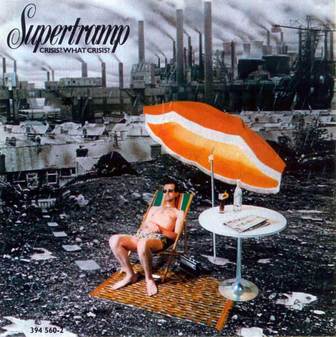 Possible human analogues in the animal world abound – the choice for ants and viruses resulted from two unusual conversations I had this week. Perhaps this idea can help guide us out of the extreme environmental crisis we’re in? Crisis? What Crisis? The iconic 1975 Supertramp album cover is more relevant now than ever- the world is in an enormous crisis. The Atmosphere is filling up with CO2 and pollutants. The first is causing devastating[1] and lethal[2] climate change, the second is one of the largest causes of death[3] in the world. Oceans are under orchestrated assault: legal and illegal overfishing have made most fish stocks dangerously low, at or near collapse[4]. Pollutants are teaming together: manmade toxins are being absorbed by plastics[5], to maximum effect: the fish you eat today contains plastics with a cocktail of carcinogens and other manmade poisons. Sea oxygen levels are dropping rapidly[6] due to global warming, and climate change and overfishing are causing lethal acidification[7]. Tipping points galore. Forests are being slaughtered at a devastating rate for meat (soya) and cheap palm oil. Soil and drinking water are being polluted by industrial agriculture and oil- and other industry. Humanity- A Virus? People often compare humanity to a parasite. A successful parasite feeds off its host, but ensures pro-creation by selecting a “vector” to move on with; the host must live long enough for this gene-transfer to take place. A virus that kills its host too early must evolve quickly or die out. While looking at earth and humankind, there are many indication that humanity works like a rather suicidal virus: feeding off and destroying the earth’s resources, including those which create oxygen, food and habitat, and no other planet to go to; killing off the host without a “vector” for survival. Humanity has shown this tendency before[9]. Seen as a whole the comparison contains points of recognition, yet the vision of humanity as a poorly adapted virus can be disheartening. Would looking at individual critters shed a different light? Humans as Ants? Ants are known as the team-workers of the natural world, with devastating destructive powers and a rather excellent self-preservation instinct. While they function individually as seemingly autonomous team workers, they ensure their long term survival through leaders- new queen[10] ants take to the wing when new colonies need starting. There are normally few leaders to a colony of ants, until the request comes around; then some pretty ordinary (female) ants take on the cloak of leadership, and with a little “assistance” start afresh. Humans are mostly followers: football, tv, car washes, fast food, shopping centres, the job with the boss: they all exist because of a human tendency towards the easy path of “following”. Yet while most humans follow in herds, many have strongly individual characteristics, not always well developed. This lack of development of true individuality –not just a fashion statement- makes historical and evolutionary sense: over previous millennia, as larger societies developed, true leadership needed suppressing: too many captains on a ship ends in mutiny or shipwreck.[11] In business and industry when we talk about leadership we typically mean “innovative management”: slight changes within a rigorous framework, like worker ants scouting for food. Even the best students of Sun Tzu’s “Art of War” win battles through combined rigour and creativity, yet fail to question the choice of enemy itself. Humans also differ substantially from ants, in the sense that collective action and dispersal can be a positive voluntary choice. A common ideal[12] (e.g. sustainability?) together with an effective organisation by such a “splinter” group is all it takes.[13] The success of such spin-offs depends on social leadership creatively applied, more than on the story-book chief, prince or leader. Humans – their own species? Perhaps, like parasites, humans collectively have the tendency to damage their own habitat. Perhaps, more akin to ants, humans also have a latent true leadership ability which, as with ants, comes out only when triggered. Wartime shows both these aspects of human behaviour, following and leading, under slightly different triggers. In times of great uncertainty, before a war, many people follow “strong” populist leaders in an attempt to avoid the crisis, or at least end up on top of the heap when it does arrive. By contrast: once war has broken out, circumstances bring out individual and social leadership in many and so help society make the best of a bad situation. And What Now? While war is a sufficiently large crisis to be a good trigger, and our current climate and environmental crisis is a far greater threat than all wars ever fought on our planet together[14], we still seem to be in the “uncertainty” follower mode rather than rolling up our sleeves to make things better. Is it possible to move straight to “making the best of the new situation” without the destructive fallout of populist divisiveness and violence while the global situation worsens? What if all those humans who are capable of questioning the choice of enemy, of seeing the true danger, those who are capable of thinking and acting and leading to great things, would take up the gauntlet thrown down by this global crisis, and take action?[15] And what if you are one of those humans? What will you do tomorrow? # References:
Referenced statements are uncontentious and widely known; sources listed here are indicative of evidence available, were amongst many used for the article, and mostly easy to access online.
My personal journey from Physics to Petroleum Engineering to Climate Change and Sustainability can seem one of radical conversion, of an almost revolutionary change in perception or beliefs. Yet while the development has radical consequences for everyday life, it takes no adjustment of the moral compass. All that is required is an improved understanding of the complex and ever changing world we live in.
From Physics to Engineering is a simple step from academia to implementation, from study to action, from calculating to building, from pencil to spanner. Petroleum Engineering (and Drilling Engineering, where I started), in the 1990's was merely an exciting form of engineering for someone who enjoyed travel, challenges, and seeing results of one's effort. The unwritten understanding supporting this step is thus: engineering of itself is not good or evil. An engineer designs and builds for a purpose, and is constrained by regulations and boundary conditions: follow the Rules and don't break the Law. Rules are there to protect the company's profit, Laws exist to ensure people and our environment are safeguarded against rogues, and there's plenty of both around. Laws and Regulations are made by governments, and when necessary they can ask for assistance from whomever they choose. Governments are clever enough to look for experts in the technical field in question, and are of course aware of any potential bias of these experts. Or so it seemed. It turns out that the government is more and more advised by companies, and less and less by independent academics. This is partly because companies often do not demand payment for their advice (can alarm bells be heard?), and also because independent academics have become few and far between now that governments globally have drastically reduced funding to universities in favour of "externally funded research". This seemingly small change radically overturns the entire premise of engineering, environmentalism, academia, and the availability of independent advice on anything. In fact, it turns centuries of practical precedent firmly on its backside. This is where engineering becomes optionally evil. Not because engineers become evil, but because the remit of engineers has slowly changed from "working within the rules" to "deciding which rules cannot be worked with", upon which engineering management instructs lawyers, lobbyists and corporate strategists to change the offending rules. And while the practice itself may be defensible -"corporate engineers are the experts so should assist the government"- the principle is unethical, immoral and entirely indefensible, as laws and regulations exist specifically to protect people and environment from conflicting interests. This insight into engineering changes the game: not that engineering itself has become evil, but that it is no longer straightforward to do engineering ethically because the boundary conditions which safeguard ethics no longer exist; we've entered Dr. Frankenstein's world. Now, to be ethical, engineers must make their own (ethical) boundary conditions which will conflict with the accepted regulations, and typically also with the corporate profit strategy (the rules) which by definition lacks ethical input. It also spoils the fun of engineering: "being clever within the boundary conditions" is not nearly as much fun if you have to make the boundary conditions yourself first, and it gets worse when you're then evaluated against non-ethical conditions instead of the ones you worked to. This insight throws up the juncture where a re-evaluation of one's industry and employer is called for, and a small insight into Climate Change is all it takes to stop exploring, constructing, and operating for the companies which subvert scientific information streams, intentionally putting the world's beautiful environment at risk, for nothing more than their personal bonuses and extravagant pensions. No, it is not just oil companies, and no, oil companies converting to gas are not exempt by any means. It is the activities performed between the UN summit of 1989 where Climate Change was rightly exposed as a clear present danger (30 years after initial evidence became public) and the IPCC was formed, and now, 27 years on, global emissions have doubled and the climate crisis brought forward by nearly a century, from 100 years to a mere 15 years. Industry management is arguing the case that "change is too difficult": even though it was possible to double emissions in 27 years, it is not possible to halve them in 30 years, they say. Not even to save the earth. As engineers, we know we can do better than this. Give an engineer the right boundary conditions (for example: zero emissions) and they will find solutions, in years rather than decades. It is management that does not want change, yet it blames a lack of engineering capability. Since we all know what engineers can achieve in times of war, and since the Climate Crisis is a more lethal and damaging crisis than all wars in the history of the earth added together, perhaps we should get management out of the conversation, make some proper rules (e.g. zero emissions by 2050), and change the energy system before it is too late. Enough academic insights, enough corporate interference, enough political stagnation; time to act is now. |
AuthorWrite something about yourself. No need to be fancy, just an overview. Archives
March 2022
Categories |
||||||||||
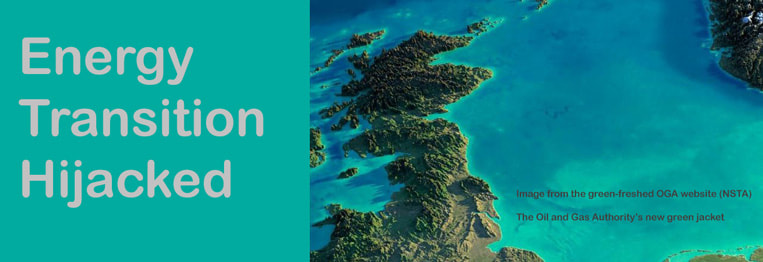

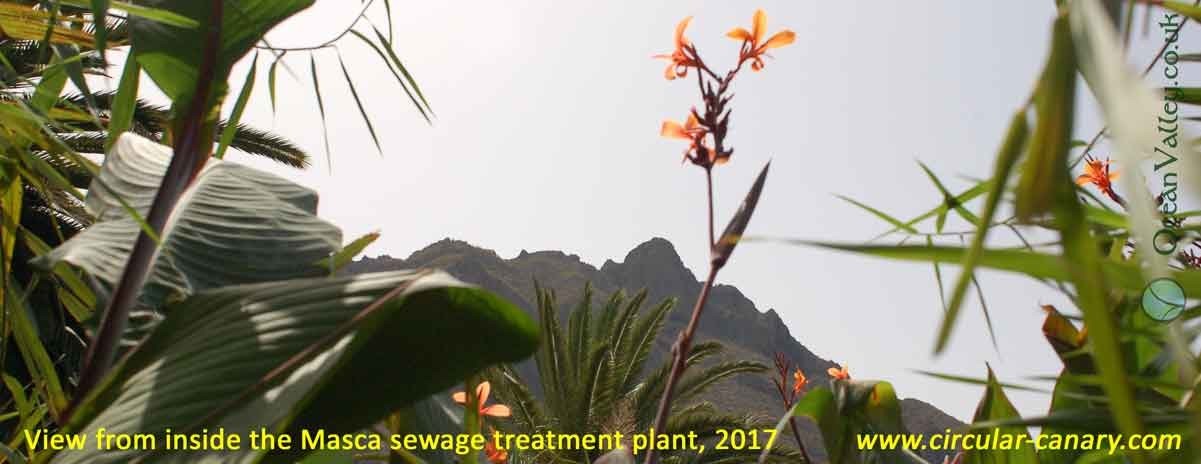



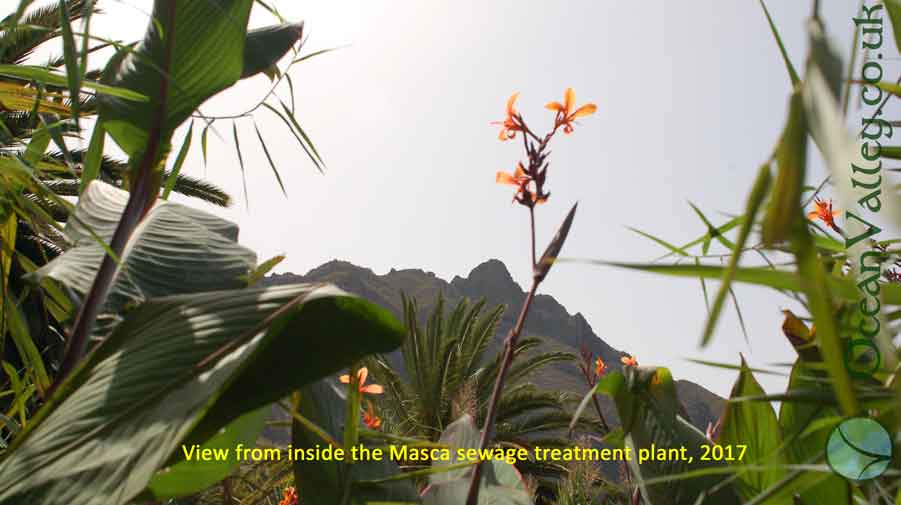
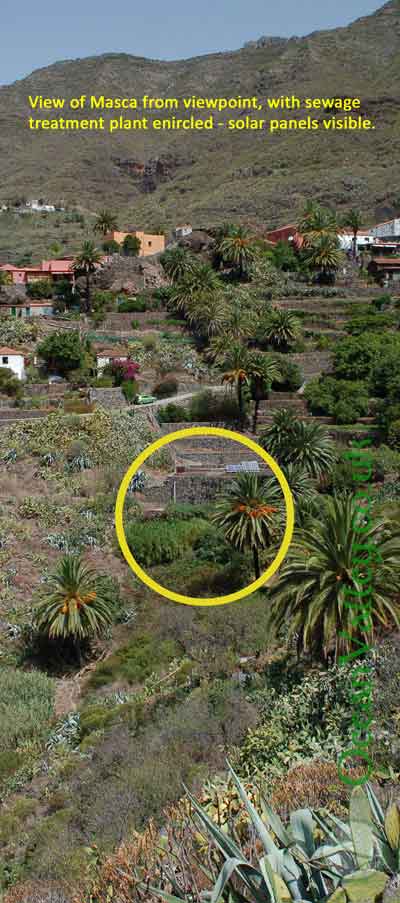
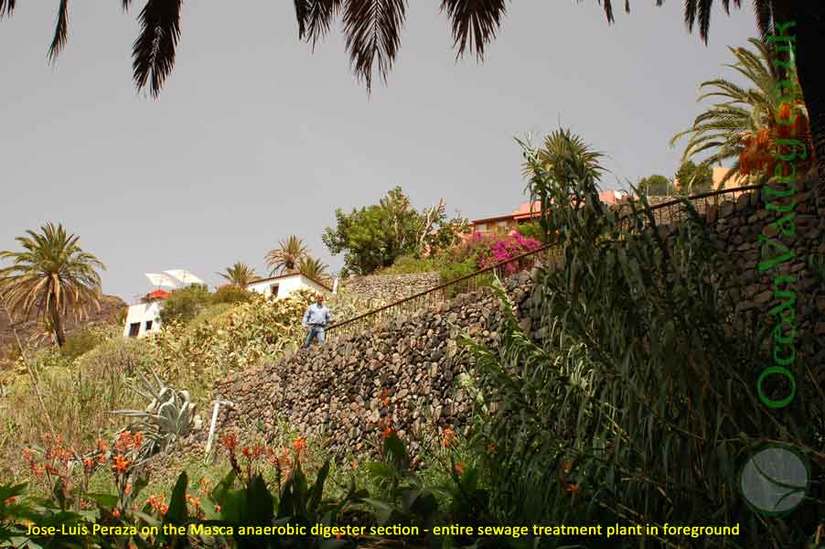
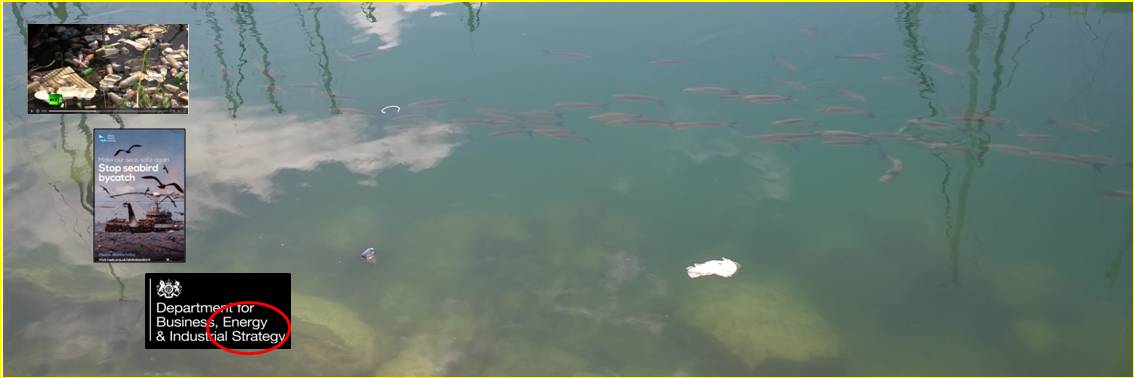
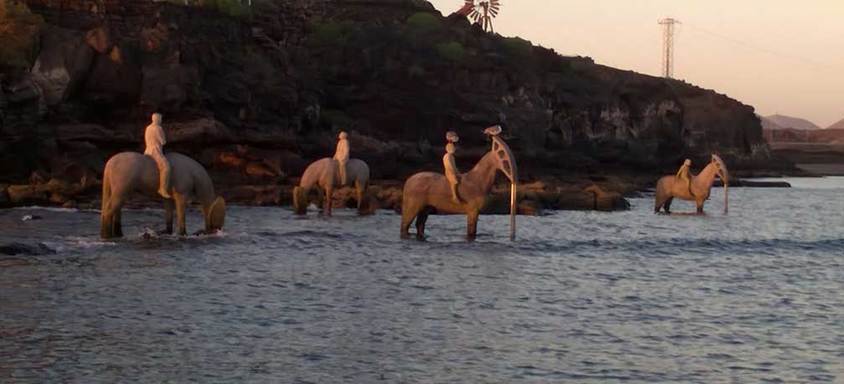
 RSS Feed
RSS Feed